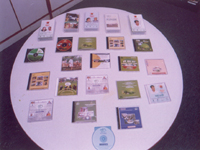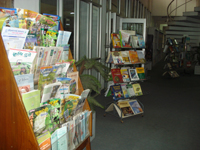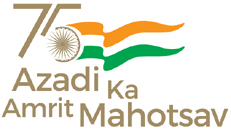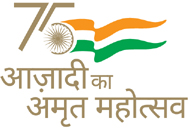



Journal of Agricultural Extension Management
Vol XVII July - December, 2016 No.2
1. Innovative Extension Models in promoting Climate Change Adaptation in Agriculture/N.Balasubramani and Sreenath Dixit
Abstract
Increasing climate variability would aggravate the problem of food and nutritional security of the growing population in India. Concerted efforts are required for mitigation and adaptation to reduce the vulnerability of Indian agriculture to the adverse impacts of climate change and making it more resilient. The Government of India has taken several steps to address climate change and reduce the vulnerability of people to adverse impacts of climate change. Various extension models are being adopted by different public and private organizations in dissemination of climate resilient technologies and to enhance the preparedness of the farmers. A few such innovative models which have been pilot tested are discussed in the paper. A strong extension network and appropriate extension methods can help enhance the capability of farmers towards adaptation of climate resilient technologies say the authors.
2. Knowledge and Adoption level of Improved Animal Husbandry Practices by Milk Producers in Chhotaudaipur district of Gujarat / B.L.Dhayal and B.M.Mehta
Abstract
Livestock are an integral part of agriculture in India and are likely to be the instruments of future growth and development of the agricultural sector. They generate employment, provide draught power, manure and earn foreign exchange through exports. Additionally, livestock make substantial contributions to environmental conservation and provide domestic fuel to save on the use of petro-products. Although the per capita consumption of foods of animal origin is low in India, demand has been rising due to the growing human population, sustained growth in per capita incomes and increasing urbanization. Dairying is an integral part of the Indian economy providing subsistence to small and marginal farmers and landless laborers. Most of the rural farmers, who keep dairy animals, do not follow modern dairy management practices. This study was conducted on knowledge and adoption level of improved animal husbandry practices and constraints faced by farmers. Result revealed that majority of dairy farmers (53%) had medium knowledge level, whereas 22 per cent and 25 per cent dairy farmers were having low and high knowledge level about improved animal husbandry practices, respectively. Majority of the members (51%) were found to be medium adopters, while 27 per cent were low adopters and 22 per cent of the members were high adopters.
3. Stakeholder Participatory Design and Development of an Agri-Infotech Portal/A. Sakeer Husain, P. Ahamed and K.M. Nithin
Abstract
The Agri-Infotech Portal (www.celkau.in), developed by Centre for e-learning of Kerala Agricultural University (KAU) is an ICT enabled bi-lingual platform for demand-driven technology information and advisory services in the agrifront, covering agriculture, animal husbandry, fisheries and allied aspects. It also acts as a platform for online course management in agriculture. As on August 2016, the portal had nearly 16 lakh hits within four years, which show a geometric progression. Besides, the portal won two international awards, one national award and the Kerala Government’s e-governance award. This paper analyses the methodology followed for designing and developing this high-end utility web portal. To accomplish this, a basic research mode work on user-centred design, testing, refining and launching of the portal was adopted, as it would match the priorities of its end-users. The utility was ensured by testing and fine-tuning from its designing stage itself. Creating a working model (prototype) before developing the actual portal was the first stage. To generate content, the information needs of the users were identified and prioritized through questionnaires, brainstorming sessions, and focus group discussions. Interpretations based on the priorities, suggestions from the users, and desktop analyses of various similar portals across the world, led to designing of the first prototype. This prototype was subjected to a process of criteria/trait based evaluation by the end-users for further refinement leading to the second prototype. This second prototype was demonstrated before various categories of end-users and stake holders for final fine-tuning.
4. Production System and Technology Adoption Profile of Black pepper Cultivation in Kerala/ K. Rejula, T. Lijo and P. Rajeev
Abstract
Within India, Kerala is the spice garden. However, the pepper cultivation system in Kerala is now handicapped by a number of problems. The yield of this crop has declined mainly due to senile plantations and minimum input use, on account of declining market price and declining profit margin. The present study was undertaken covering three districts of Kerala through a sample survey to study the features of the production system and track major shifts, study the technology adoption profile of the farmers and identify major constraints as perceived by the farmers. Around 38 per cent of the farmers adopted organic production system and technology adoption profile showed a less input intensive approach. Even though 60 per cent of farmers practiced rain fed cultivation, 15 per cent fully irrigated and 25 per cent adopted irrigation partially. Majority of the farmers were holding land between 80 cents to 4.5 acres. Around 40 per cent of the total vine population was in the pre-bearing stage. There is slow and gradual increase in adoption rate of improved varieties and majority of the farmers sourced new planting material from own fields, showing less dependence on public and private nurseries. The major field problems reported by the farmers are pre-bearing loss of the vines, and many biotic problems like pest and disease incidence and environmental problems like shifts in climate especially rainfall.
5. Inclusive Strategy for Small and Marginal Farmers in Tapioca Production, Processing and Marketing/ R. Sendilkumar and S. Arya
Abstract
This study was conducted to explore the post-harvest value addition opportunities tapioca, identify the constraints faced by small and marginal farmers in processing and to suggest a strategy. Primary data from 60 tapioca farmers of Elamadu Grama Panchayath of Kollam district, Kerala were collected through interview schedule. Expert opinion was collected from the Scientists of Kerala Agricultural University (KAU), KVK, and CTCRI etc. to screen the appropriate technology for tapioca value addition. The data obtained were analysed using percentage analysis, SWOC and COWS analysis. It was found that a number of farmers were involved in tapioca cultivation and could produce marketable surplus, but were not engaged in any post-harvest value addition activities. Indeed, farmers have expressed their willingness to start value addition jointly as a group. The technocrats opined that tapioca snacks and chips are better options for value addition at farm level. The study highlighted the need for an exclusive organisation for tapioca cultivation, marketing and processing. Initiating farmer driven producer organisations and consumer linked value chain would be a promising strategy for livelihood of small and marginal farmers of tapioca.
6. Role of Plant Diagnostic Laboratory for identification and management of Insect Pests of Paddy in Kapurthala District/Gurmeet Singh, Manoj Sharma, Jatinder Manan and Gobinder Singh
Abstract
Paddy is grown under different agro-climatic conditions and the crop is damaged by more than 100 species of insect pests and infested by varied diseases. These insect pests cause enormous grain yield losses, which may vary from 20 to 50 per cent if not managed in time. During the last 3 years i.e. from 2013 to 2015, a record of all the visiting farmers was maintained in the plant health diagnostic laboratory at the Krishi Vigyan Kendra, in which complete details of the farmer with address and contact number was maintained. It was noticed that majority of the farmers (80.5%) visited during the month of April and only 19.5 per cent visited in the month of May as sowing of paddy nursery starts from the first week of May every year. The crop was also found to be prone to micro nutrient deficiency and showed deficiency symptoms in iron and zinc. It was inferred that before the sowing and harvesting of the crop, the farmers queries were maximum due to the fact that majority of insect pest attack takes place near maturity of the crop which results in huge loss, if not taken seriously. As Krishi Vigyan Kendra imparts short duration training to farmers from time to time, it can be concluded that KVK staff should provide training relating to the above mentioned technological problems in a particular month.
7. Motivational Factors and Constraints of Dairy Farmers trained by Krishi Vigyan Kendra/Punith, Basavaraj Beerannavar and J.Raghuraja
Abstract
The study was conducted in Shivamogga district of Karnataka state to analyse the motivational factors, constraints and to enlist suggestions of farmers trained on dairy management practices by KVK, Shivamogga. In all 120 trained farmers from 12 villages constituted the sample for the study. The findings revealed that the factors viz., to increase income from dairy by learning new practices (76.66%), to have contact with the extension agency (55.00%), to get self-employment by attending training programmes (44.16%) motivated the respondents to attend the training. The trained farmers expressed that constraints such as, financial problems (71.67%), shortage of green fodder during summer season (59.17%), low price for the milk (44.17%) and inadequate veterinary services (39.17%) are adversely effecting the dairy enterprise. Majority of KVK trained farmers sought more number of extension activities to be organized based on the needs of the farmers (75%), followed by, remunerative price for milk (72.50%).
8. Training Evaluation of Field Veterinarians: Implications for Scaling Up /M. Ravi Kumar, K. Gabriel and P.V.K. Sasidhar
Abstract
This paper presents the evaluation findings on effectiveness of gynecological training programmes organized for field veterinarians in Andhra Pradesh. The key evaluation questions were on training methodology, relevance of course content, knowledge and skill improvement, utility of the topics and overall effectiveness of the programmes. The findings indicated a high relevance of the contents with overall increase of 29.03 per cent knowledge and skill gain by the participants. The findings also suggested that field veterinarians’ competencies have been improved using a combination of theoretical, practical and field exposure sessions in an organized way. It is recommended to standardize the curriculum and scale-up training programmes to all field veterinarians as open education resources to update their competencies.
9. Development of Knowledge Test to Assess Knowledge Level about Improved Dairy Farming Practices among Users and Non-users of e-Agriservice in Maharashtra /S. K. Wadkar,K. Singh, K. S. Kadian, Ritu Chakravarty and S. D. Argade
Abstract
Effectiveness of ICT-enabled e-Agriservice - aAQUA (Almost All Questions Answered) with special reference to dairy farming, was assessed in Maharashtra. Ex-post-facto research design was followed. This paper presents the procedure to develop a knowledge index for users and non-users to assess impact in terms of knowledge gain about Improved Dairy Farming Practices (IDFPs) by availing the e-Agriservice. The study was conducted in randomly selected four districts of Maharashtra. A total of 37 items or questions were framed on breeding, feed-fodder, health care and management aspects of the IDFPs. It was found that the items with difficulty index between 0.25-0.75, discrimination index above 20 and point bi-serial correlation significant at 5 per cent level of significance was selected for the knowledge test. Thus, a total of 29 items from 37 items were retained in the knowledge test. The study would be useful for researchers and academicians to develop and use the knowledge test in other areas to measure knowledge level of dairy farmers.






